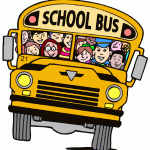If you’ve seen the movie, Dirty Dancing, you most likely remember the line, “Nobody puts Baby in a corner.” And if you remember this line, then you most likely remember how determined Patrick Swayze’s character was to place his beloved Baby in her much-deserved spotlight to dance, shine, and find her balance in the quintessential airlift-of-all-airlift moments of all dance movies. As I read fellow-SFS-blogger Daniela’s post this week about teacher leadership, I was struck by how, in our efforts to define teacher leadership as a profession, we may be putting ourselves in the proverbial corner.
In her blog, Daniela describes her encounters with people who claim that only people who teach students daily can call themselves teacher leaders. I take issue with this.
As a National Board Certified Teacher, I engaged in a rigorous process to show my practice through the standards set forth by the National Board for Professional Teaching Standards. As such, I have demonstrated that I, not only have content-game, but that I am a leader, learner, and collaborator that can build and sustain meaningful relationships with my students, colleagues, and the community. I would say that I have earned a national distinction that dubs me “teacher leader.”
But what happens when people like myself find themselves in a position outside of the classroom, where they are still teaching, but are working with adult learners? Prior to returning to a high school classroom this year, I had the pleasure of working for the Arizona K12 Center – and during the three years that I worked there, I regarded myself as a teacher leader. The entire time. In my role managing a statewide support system for teachers pursuing National Board Certification, I actively taught people – but they were teachers. I also continually demonstrated my content game through that teaching. And I built a variety of meaningful relationships with those that I taught, I collaborated with colleagues in multiple school districts, higher education contexts, and philanthropic organizations, and I actively partnered with community and state department offices to impact student learning…
Was I not supposed to call myself a teacher leader because I wasn’t teaching K-12 students? Did I miss a memo from God or the Universe that laid out the official definition and parameters for what it means to be a teacher leader?
And what does it really mean to be a “teacher leader” anyways? Should there even be an official definition? Most importantly, why can’t we blur the lines of perceived definitions of teacher leadership? The students that we serve through our various leadership efforts certainly aren’t black and white, therefore, neither is the complex work that we do as teachers who lead our profession. Complexity, flexibility, and positive intentions are, indeed, what we should be spreading to lift one another, and our entire profession, to new heights.
And we’ll need many more quality airlifts to achieve that (insert music from The Time of My Life here).










Comments 3
Alaina a beautiful post!
The questions you have posed have sparked deep thinking for me. As I contemplate IF/when it’s time to leave the classroom, I have questioned this myself. Can I still be a teacher leader, if I am no longer teaching my K (K-12) students.
If we put teacher leadership in a corner, how is that doing any justice to elevating the profession?
Thanks for this post!
Alaina, this posting has me singing, just as Daniella’s post had me sighing! Why do we insist on labeling aspects of our profession as black or white, true or false, yes or no, when we would never do that to our students? It is time we expand what we mean by teacher leadership. #teacherarmy
Thank you for shining the light on all of the teacher leaders that are not dubbed “leaders” and all of the educational leaders who are shunned for calling themselves “teachers”. It is so important to remember that we are all in this together and it will take all of us working together to bring about systematic change.